Far Cry Primal languishes under the burden of being a first-person shooter without guns, striving for equivalence where it could have been utterly unique.
I’m not sure why we don’t see more games based in the very distant past. Until Assassin’s Creed, the furthest into history you could expect to travel in most AAA releases was World War II. Unlike the distant future, people seem to describe ancient eras in terms of their limitations rather than their freedom. No guns, no vehicles, no structures, no rule of law or unified culture. When observed from that limited vantage, the past can seem overtly bland and simplistic.
Unfortunately Far Cry Primal, in the service of a unique and expansive setting, fails to look beyond those limitations for something more. That’s not to say that Ubisoft’s prehistoric spin-off from their blockbuster tower activation franchise isn’t enjoyable. Everything you’d expect from the series is present in some respect, albeit often muted.
After a linear introductory sequence that introduces you to the prehistoric Wenja tribe and their quest for unification, you’re dropped into a very familiar expanse of geography. From there, you’ll do a lot of picking flowers and killing a variety of animals, while pursuing dozens of sidequests to escort, protect, or kill your fellow cave men. Sometimes it’s thrilling, but more often it’s exactly like the last thing a shouting Wenja asked of you. Repeated over dozens of hours, it becomes rote.
The recycling of Far Cry 4‘s map is one of the most obvious symptoms of Primal’s determination to iterate rather than innovate and smacks of the same poor decisions that led Ubisoft’s other major property to languish. Let’s be clear: Far Cry Blood Dragon was unfettered genius, and it recycled Far Cry 3‘s geography wholesale. But Blood Dragon was also half the cost of a full-priced game and was hilarious and brilliant in every other way. Far Cry Primal isn’t just a step backward in time, it’s a step backward in virtually every other way.
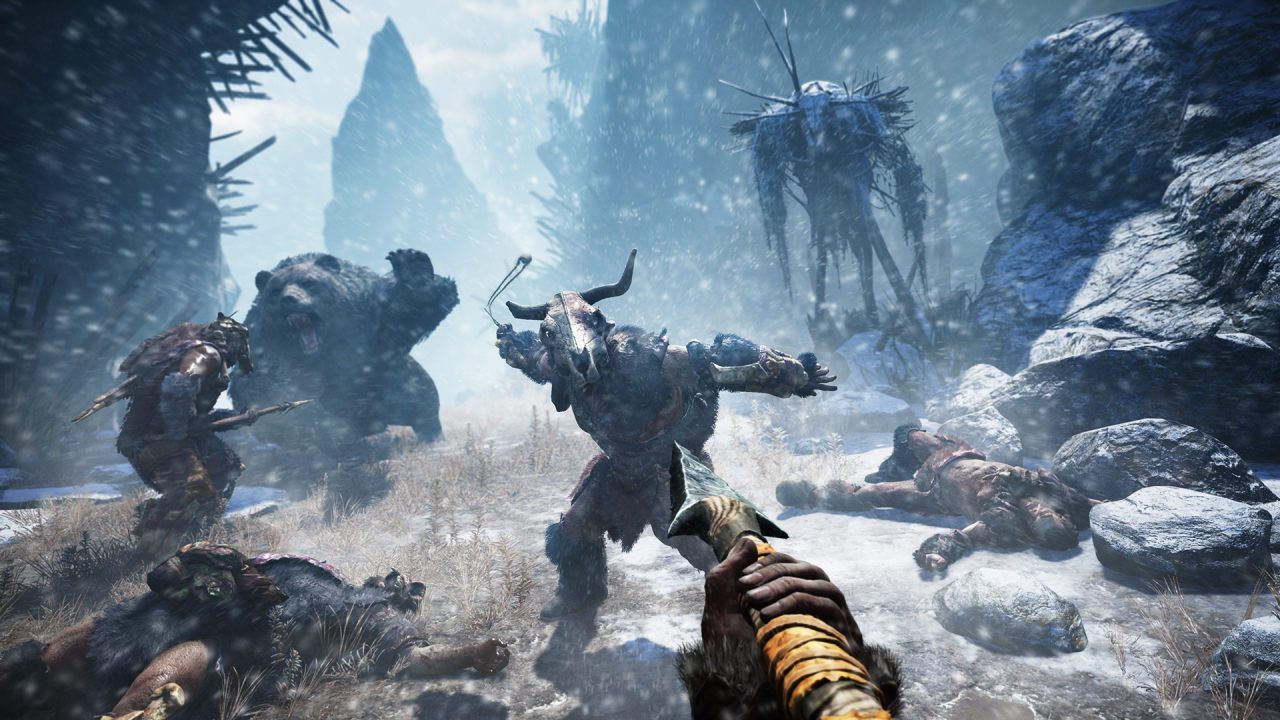
You are Takkar, a warrior of the scattered Wenja people, striving to unite his tribe in the promised land of Oros. You’re also their venerated “Beast Master,” gifted with the pseudo-supernatural ability to tame and command the creatures that fill the valley. Each of these concepts is dripping with opportunity for gameplay exploration but is almost always narrowly missed in favor of bullet-point execution that consistently misses out on the sense of wonder it could provide.
First and foremost is combat. It’s solid and reliable, but it’s also a carbon copy of modern gunplay. This reliance on modern FPS tropes waters down the experience. A few hours in, you’ll have an equivalent bow-pistol, bow-shotgun, and bow-sniper-rifle. You can melee attack with a small, quick club, or a big, slow club. The spear functions as a hybrid of the two, but is almost always less effective than either specialized option. You’ll also get a selection of grenades — bees, poison, or “berserk” — and somewhat redundant throwing knives.
Rather than feeling like I was adapting to combat in a savage world, my armaments felt and functioned like guns in a prehistoric disguise. There is little to no difference between this version of Far Cry set in the time before recorded history and Far Cry 3 playing as an energy drink-swilling skydiver, but it feels like there should be.
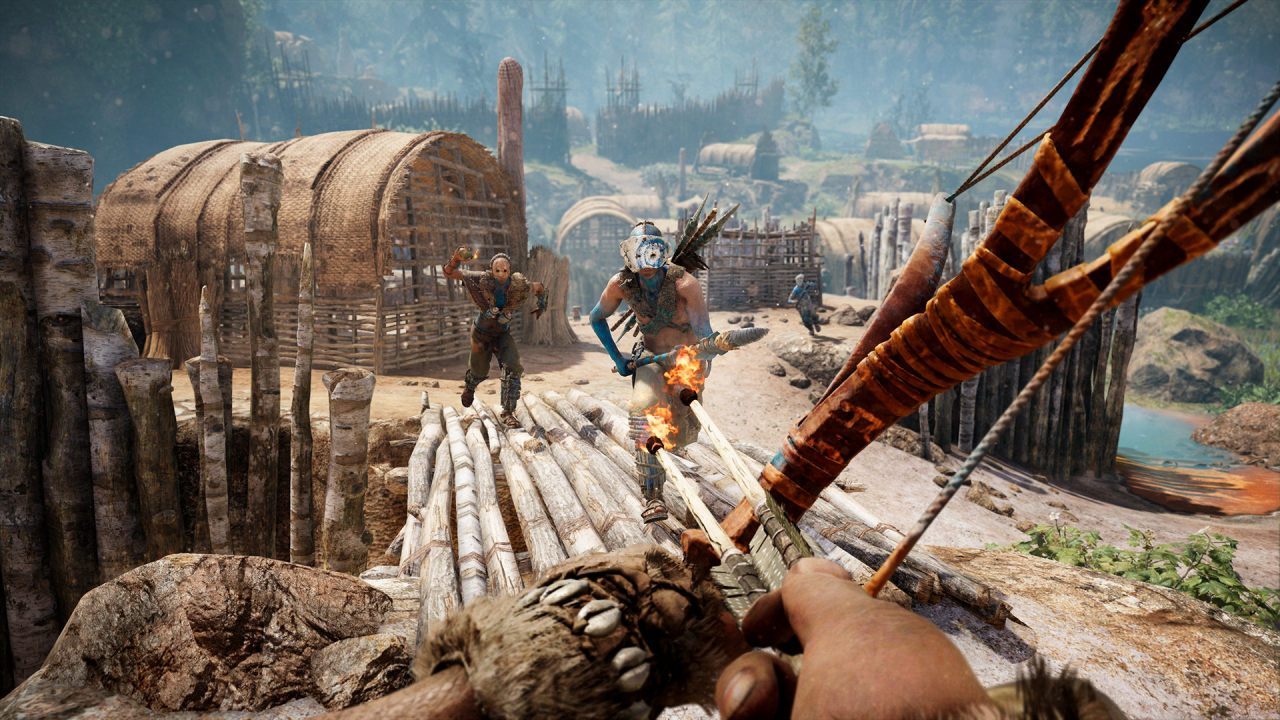
I did, however, appreciate the ability to ignite most of my weapons. Ever since Far Cry 2‘s spreading, deadly brush fires, the franchise has made good use of the power and unpredictability of flame. It’s present here, and it’s just as much fun as it’s been in the last several iterations. Whether I was using my club as a makeshift torch in the recesses of a cavern, or firing a crackling arrow into the heart of a rival tribe’s camp, manipulating the environment with this natural destructive force was always a highlight.
The real wild card is the animal life of Oros, the beasts that will serve as enemy and ally — frequently at the same time. Here, too, we have a great idea that falls just short of its true potential. As the shaman-dubbed Beast Master of the Wenja, Takkar goes through the sort of hallucinogenic spiritual journey that most heroes in a modern Ubisoft action game eventually undertake. Far Cry Primal’s hero uses his particular dream sequence to gain the ability to tame the predators that fill his world.
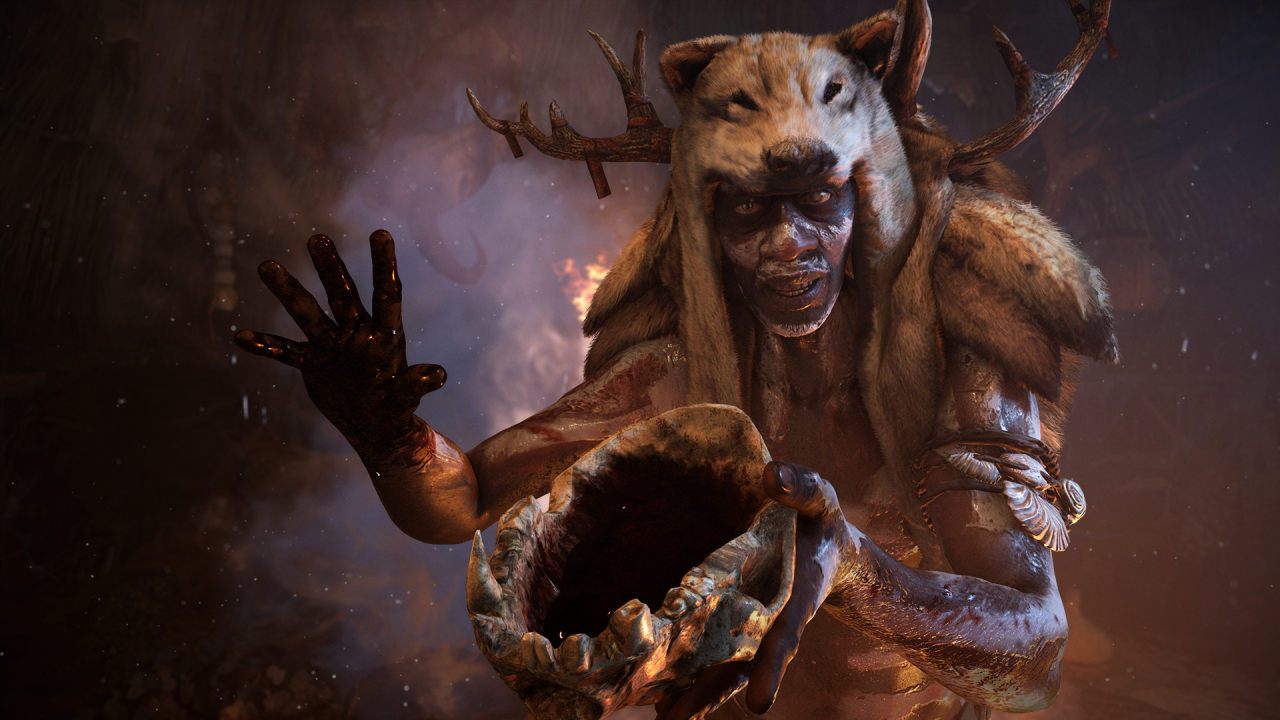
Let’s get one thing out of the way right now: you can befriend a honey badger, and you can ride a bear. A lot of people will probably stop right here and purchase the game. I’m going to acknowledge the gleeful abandon of charging bear-back (sorry) into battle, and congratulate the development team for their meme execution, but we’ve got more to cover.
Taming animals is a single-step process. Throw a hunk of bait somewhere near your preferred carnivore, then hold down the interaction button while it sniffs at it. From that moment on, you have unlimited access to that creature. If they’re injured you can heal them, and if they fall you can revive them, or you can just summon another copy and move on.
Once you have an animal companion, you have a single command with which to direct them. You can point to terrain to have them move toward it or a target to have them attack. Each species — and their rarer variants — has differing measures of speed, strength, or stealth. They also have unique characteristics. One might spot and “tag” all enemies within a certain radius, or be able to stealth-kill foes without alerting others nearby. As mentioned before, some of the larger ones are also rideable, if you need to cover a lot of ground quickly.
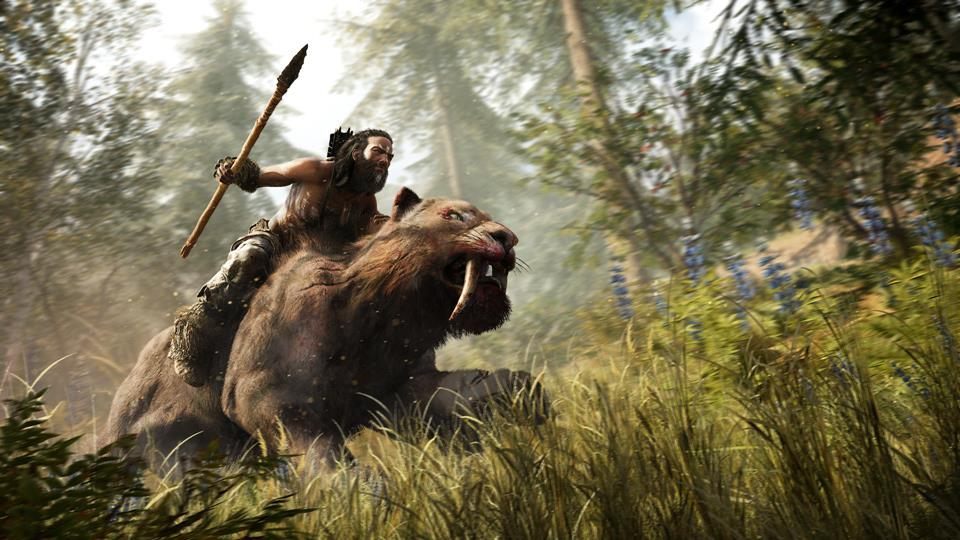
And there are a lot of animals around at any given time. Running through Oros feels like fleeing a zoo in which every cage has been simultaneously opened. A little bit of restraint might have made the world feel living and active, but as it stands there are almost endless parades of mammoths, goats, wolves, boars, and an assortment of predatory cats all chasing one another, often at the same time. It would make a funny anecdote if it were a rare occurrence, but the constant overcrowding wildlife just makes the whole thing a bit slapstick.
You’ll be glad of the teeming flora and fauna when it comes time to build on your growing Wenja population. While most tribespeople function as little more than set dressing for an overall village score, the supporting characters you encounter will also settle in their own corners of your growing civilization. You’ll need a whole lot of wood, stone, flowers, and animal products to upgrade their dwellings, and will be rewarded with upgraded weapons and items as well as experience.
It feels like another missed opportunity. You have no control over the development of the village, other than delivering goods to make a supporting character’s house more elaborate. You can’t even customize or develop your own cave, which serves as an in-game series of progress tracking boards. Even a small amount of control would have gone a long way toward providing a sense of ownership, but it’s just window dressing on a quest hub.
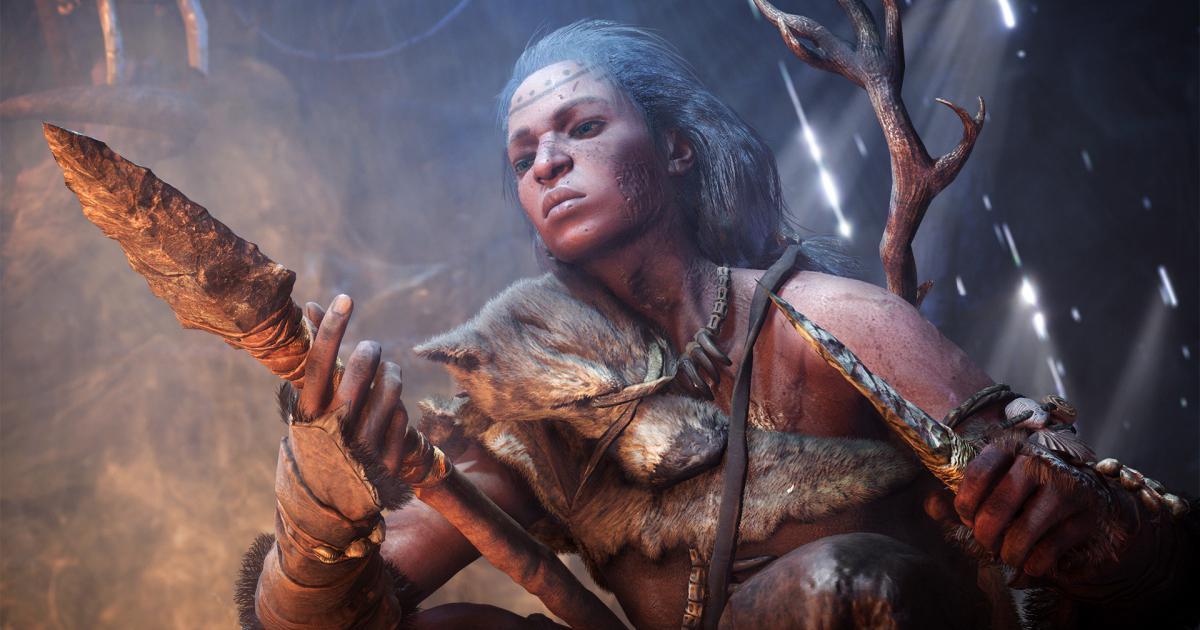
Like the other recent Far Cry installments, the experience you gain for all of these activities will be used to fill out a menu full of skills and perks in varying degrees of usefulness. Quick reloading, chained takedowns, and crafting buffs all return, with a few unique skills added here and there to allow you to ride a wider variety of beasts or have your pet owl drop bombs on unsuspecting enemies. There’s far more than enough content to get every single upgrade, so choosing is more about your immediate needs than creating a unique version of Takkar.
All of this is wrapped in a shiny package that looks a little rough around the edges but sounds brilliant. Graphically, Far Cry Primal is outclassed by its recent predecessor; Oros never looks quite as beautiful as Far Cry 4‘s Kyrat. The sound design, however, is a breakaway success.
The Wenja and Izila languages in particular are well implemented, and the character animation pairs with top-notch voice acting to produce the best moments in the game. Primal rarely reaches the cinematic heights of other installments, but its best moments are those in which the supporting cast is given time to shine. I’d like to have spent a little more time with those personalities.
And every so often, despite an overarching lack of ambition, the disparate parts unite to form a cohesive whole: a pack of wolves distracts a hunting party of cannibalistic rivals; a wildfire blazes out of control in the night, walling off a crucial exit; your owl screeches from the sky to eviscerate a foe as your jaguar stealthily removes one of the forward scouts, and you take careful aim at their leader from the shadows with your spear.
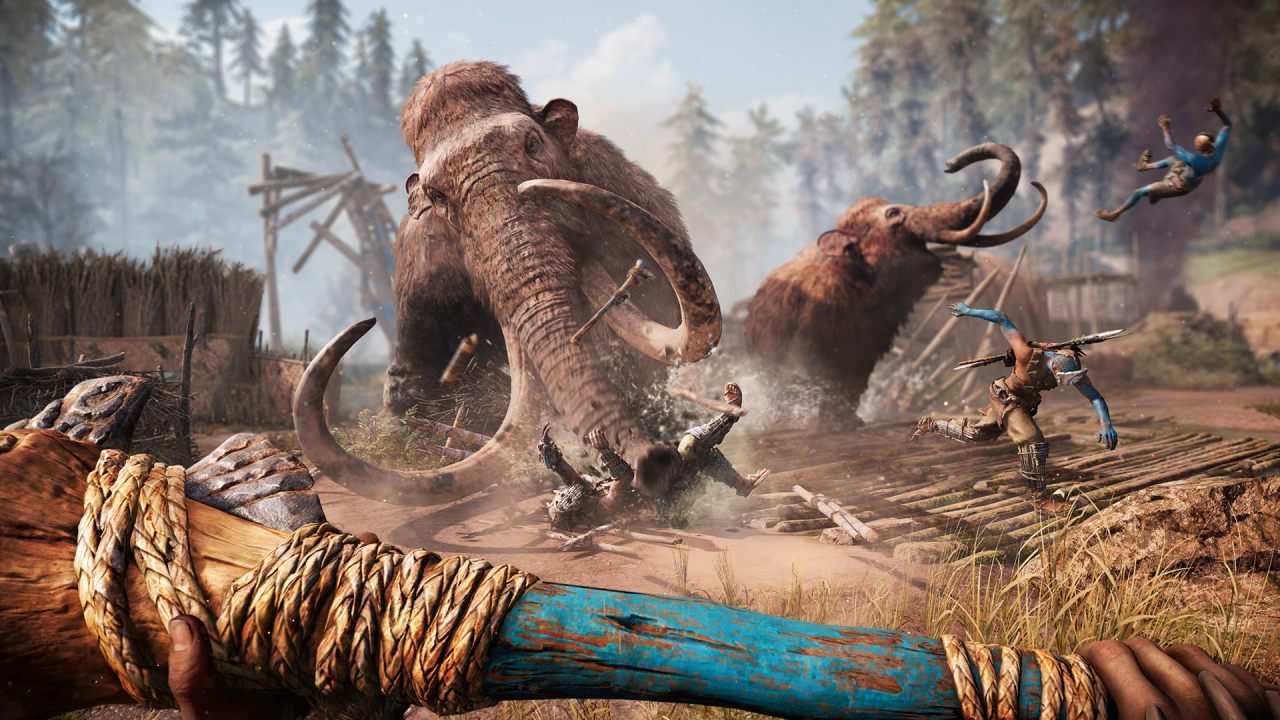
Far Cry: Blood Dragon was the first franchise spin-off and managed to make a nearly identical landmass to Far Cry 3 feel a universe away. It was silly and gimmicky and utterly brilliant, streamlined and small but bursting with potential. It felt like the product of letting creative and talented people off the leash to truly enjoy their work, and every moment shone because of it. To this day, it remains one of my fondest gaming memories. Primal has that potential, but tragically fails to leverage it.
Make no mistake: the experience that Ubisoft promises with Far Cry Primal is there, it’s just buried under a mountain of FPS staples that suggest the team was afraid to deviate too far from a formula that has easily sold millions of copies. It’s a shame, because lurking beneath is a game that occasionally suggests that it could have been so much more than a long-winded cycle of resource grinding layered over generic mission structure.
It’s the sort of game for which the infamous 7/10 game review was made; it never truly fails, but because of its risk-averse approach to design, never truly succeeds, either. It’s easy to recommend to fans who have not yet tired of the formula, or those for whom the setting alone is enough of a draw. I just can’t help but find myself a little disappointed that it doesn’t take to heart the challenge it so readily proposes to its players. If Far Cry wishes to “rise above extinction,” it needs to avoid the pitfalls of Assassin’s Creed and prioritize exploration and innovation instead of sticking to the well-worn path of its forebears.
Note: This review is based on a copy of the PC version of Far Cry Primal that was provided by Ubisoft.
Follow Nate Church @Get2Church on Twitter for the latest news in gaming and technology, and snarky opinions on both.
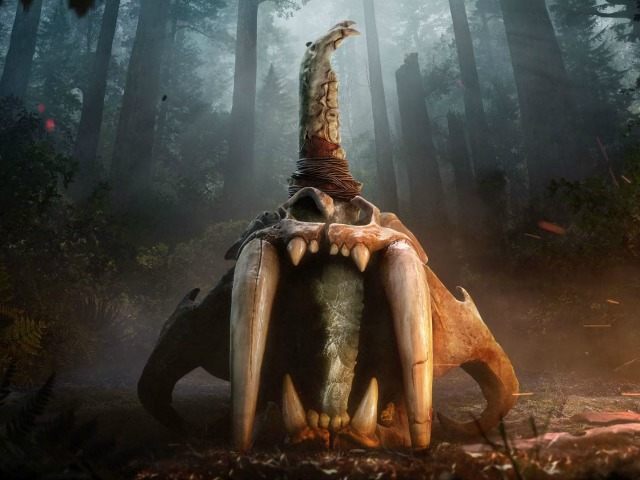
COMMENTS
Please let us know if you're having issues with commenting.